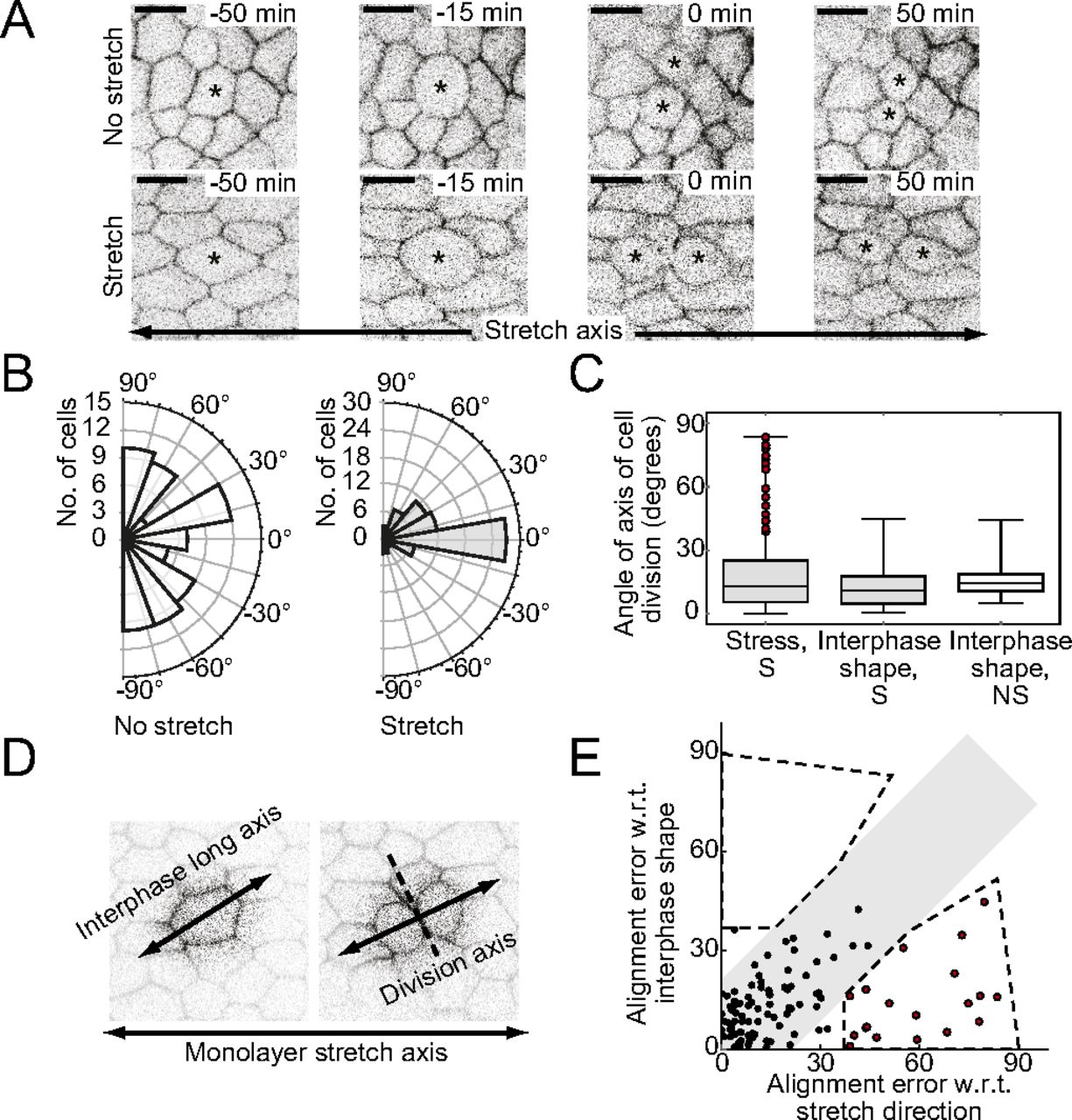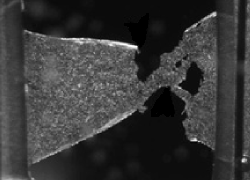
Citation
T.P.J. Wyatt, A.R. Harris, M. Lam, Q. Cheng, J. Bellis, A. Dimitracopoulos, A.J. Kabla, G.T. Charras and B. Baum
PNAS 112:5726-5731 (2015)
Abstract
Significance
Abstract
Significance
Animal cells undergo a remarkable series of shape changes as they pass through mitosis and divide. In an epithelial tissue, the impact of these morphogenetic processes depends strongly on the orientation of division. However, the cues orienting divisions remain poorly understood. Here, we combine live imaging and mechanical perturbations with computational modeling to investigate the effects of shape changes accompanying mitosis and division in stretched monolayers in the absence of neighbor exchange. We show that divisions orient with the long cell axis rather than with the stress direction, and show how oriented divisions contribute to the restoration of cell packing and stress relaxation. In doing so, we identify a clear role for oriented cell division in morphogenetically active tissues.
Summary
Cell division plays an important role in animal tissue morphogenesis, which depends, critically, on the orientation of divisions. In isolated adherent cells, the orientation of mitotic spindles is sensitive to interphase cell shape and the direction of extrinsic mechanical forces. In epithelia, the relative importance of these two factors is challenging to assess. To do this, we used suspended monolayers devoid of ECM, where divisions become oriented following a stretch, allowing the regulation and function of epithelial division orientation in stress relaxation to be characterized. Using this system, we found that divisions align better with the long, interphase cell axis than with the monolayer stress axis. Nevertheless, because the application of stretch induces a global realignment of interphase long axes along the direction of extension, this is sufficient to bias the orientation of divisions in the direction of stretch. Each division redistributes the mother cell mass along the axis of division. Thus, the global bias in division orientation enables cells to act collectively to redistribute mass along the axis of stretch, helping to return the monolayer to its resting state. Further, this behavior could be quantitatively reproduced using a model designed to assess the impact of autonomous changes in mitotic cell mechanics within a stretched monolayer. In summary, the propensity of cells to divide along their long axis preserves epithelial homeostasis by facilitating both stress relaxation and isotropic growth without the need for cells to read or transduce mechanical signals.
Figure sample

Divisions align along the interphase long cell axis monolayers. (A) Time series of a dividing cell expressing E-cadherin–GFP to enable visualization of intercellular junctions in a nonstretched monolayer and a stretched monolayer. Time is measured from division. Asterisks mark dividing and daughter cells. (Scale bars: 10 μm.) (B) Orientation of division with respect to the direction of stretch or with respect to the direction perpendicular to the test rods in the no-stretch case (n ≥ 72 divisions and n = 3 monolayers for each condition). (C) Orientation of division with respect to the axis of stretch (stress, Left), to the interphase shape orientation in stretched monolayers (Middle), and to the interphase orientation in nonstretched monolayers (Right) for elongated cells (r > 1.4). Cells marked by a red point correspond to those appearing in red in E. NS, nonstretched; S, stretched. (D) Dividing cell in a stretched monolayer. The interphase shape is misaligned with the direction of monolayer stress, and the division follows the interphase shape rather than the monolayer stress direction. (E) Error in alignment of division with the monolayer stress axes plotted against the error in alignment with interphase shape for elongated (r > 1.4) cells in stretched monolayers. The gray shading shows the region in which divisions align equally well with monolayer stress and interphase shape. Dotted lines demarcate regions where divisions align significantly better with interphase shape than stress, and vice versa.


